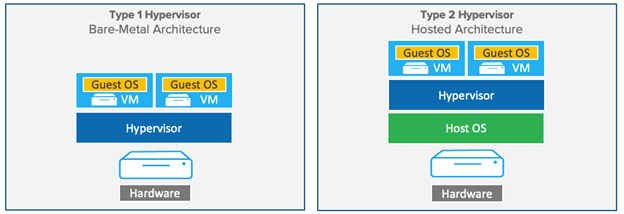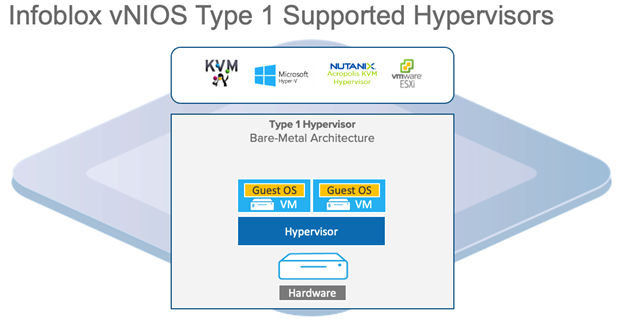Virtual Origins
Simply stated, a hypervisor is a program that establishes a virtual machine (VM) environment. It separates the operating system (OS) and applications from the underlying physical hardware. Virtualization is enabled by giving a physical machine the ability to operate multiple VMs. The concept originates from the 1960s mainframe era when IBM was focused on developing robust time-sharing solutions. Originally conceived as a “Control Program,” the term “hypervisor” enhanced the idea of the supervisor, the kernel of an operating system. “Hyper” was applied to convey a stronger “supervisor of supervisors” capability which began as software but later evolved using hardware circuits. Today’s hypervisors encompass layers of software, firmware or hardware that create and run multiple VMs.
How Hypervisors Work
Hypervisors divide a computer into secure individualized environments and distribute the hardware’s resources across those environments. The “host” is the hardware, computer, or physical appliance, while the “guest” is the VM, comprised of a virtual OS and application software that runs on the host and uses the host’s resources (e.g., computing power, storage, bandwidth, and memory). The hypervisor supports a single host to run and manage the operations of multiple concurrent VMs. Hypervisors provide a layer between the host hardware and guest VM and manage all the transactions between the two. There are two types of hypervisors (shown below). Type 1 is based on “Bare-Metal Architecture” and operates on the physical hardware or appliance. Type 2 is referred to as “Hosted Architecture” and runs as a software layer on the host OS.

Type 1 bare-metal hypervisors are often because they have direct access to system hardware and do not need to pass through the OS layer. Modern versions are Type 1 hypervisors with examples including Citrix/Xen Server, KVM, Microsoft Hyper-V, Nutanix Acropolis KVM and VMware ESXi. They easily isolate partitions and direct all available hardware power to VMs without having to compete with the OS or other applications. Bare-metal hypervisors are typically more secure because without a host OS, there is less attack surface for malicious threats and activities.
Type 2 hypervisors are typically installed on an existing operating system which makes them hosted hypervisors. They can support a broad range of hardware and rely on the host machine’s OS to complete operations like calls, and network resource, memory, and storage management. They offer a user interface, making them easier to setup, faster to get running and less costly to operate. They are often used by teams for development and testing to evaluate new features and programs without impacting the host OS. Type 2 examples include Microsoft Virtual PC, Oracle Solaris Zones, Oracle Virtual Box, Oracle VM Server for x86, VMware Fusion and VMware Workstation.
In addition to the common Type 1 and 2 hypervisor uses and benefits noted above, additional benefits gained by deploying hypervisors in your environment include:
- Availability: Without accessing host resources, hypervisors can deliver higher levels of availability, computing performance and scalability.
- Security: By creating a more secure operating environment, hypervisors virtually eliminate internal conflicts by isolating each VM. Thus, any emerging issues on one VM will not affect the others, yet still allow continued operations at peak performance as expected.
- Simplification: Running multiple applications on the same hardware can create conflicts, but hypervisors enable administrators to operate and track concurrent VMs on a single host machine.
- Performance: Different operating systems and applications can be isolated and abstracted from the host to create independent instances for better development, consolidated operations, streamlined workloads, security, and control.
- Automation:
- Utilization: Hypervisors helps to ensure proper resource utilization by matching process supply requirements with a connected VM and reducing the need for dependencies on specific physical appliances and applications.
- Productivity: By reducing testing and de-bugging time, hypervisors help DevOps improve productivity and automate workflow and management processes to lower operating costs.
- Value: Hypervisors boost economic value for the data center through hardware server utilization, reduction of power usage, increase in OS backup efficiency, and improvement of maintenance and lifecycle management.
What to Watch For
While hypervisors enable many desirable benefits, there are some factors to consider when choosing a virtualization solution for your business.
- Plan: Exercise diligence, assess your use cases and consider factors including ease-of-use, speed of deployment, user interface, overhead, support and integration with your core network system when selecting a bare metal or hosted architecture.
- Security: Apply the security adage, “not if but when.” Security may become an issue as hypervisors are targeted for cyberattack, especially in non-security hardened systems, without integrated DNS security, on-prem, hybrid and multi-cloud threat defense, intel, and remediation tools.
- Cost: The initial hypervisor setup and licensing cost could be high depending on the selected architecture and deployment. A sharp focus on goals, near- and long-term planning and expected RoI can inform the best choices for virtualization.
- Integration: Not all use cases, software and systems are the right fit for virtualization. However, vendors with existing templated integrations and open, RESTful, well-documented APIs for optimizing applications.
Infoblox Supported Hypervisors
As the in hybrid, multi-cloud core network and security services, Infoblox offers ongoing development and support for vNIOS Type 1 supported hypervisors. These include KVM, Microsoft Hyper-V, Nutanix Acropolis KVM and VMware ESXi to help deliver the benefits of virtualization to your organization.

For more information or assistance in deploying virtualization solutions across your network, contact your Infoblox account team or solution architect today.








